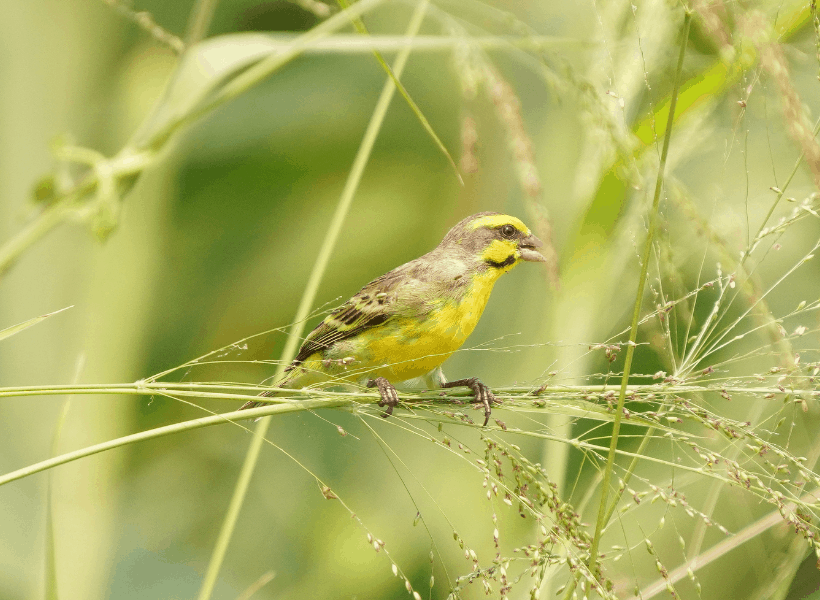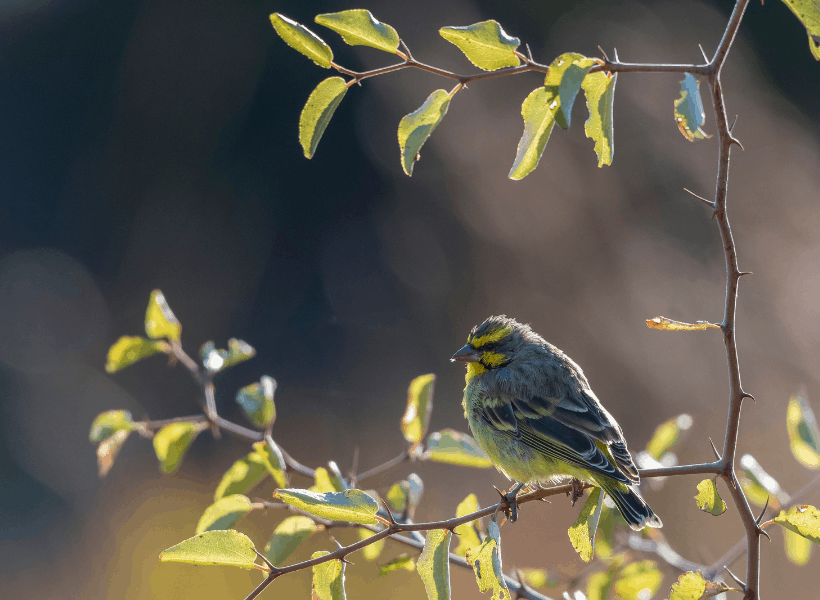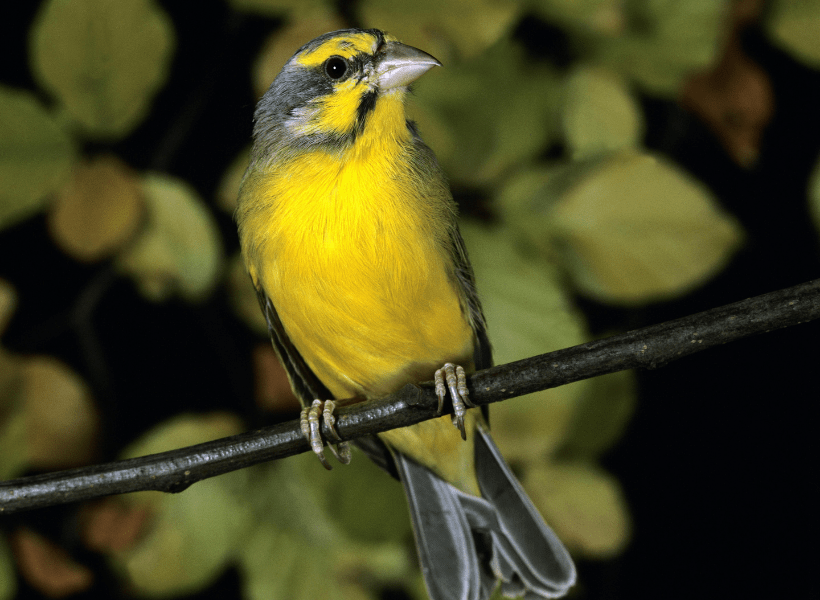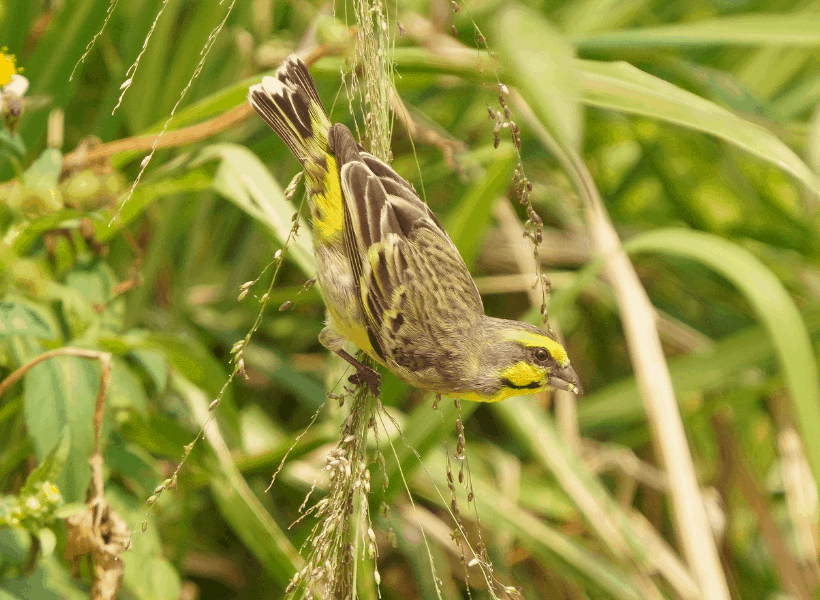The green singing finch is a small, bright yellow bird that can be found in the wild throughout Central and Southern Africa. They are known for their beautiful song and relatively easy breeding requirements. This blog post will look at where these finches come from, what they eat, how to breed them in captivity and what they are like if they are living with other types of finches.
What is a green singing finch?
The green singing finch is often known as the green singer in captivity. But this isn’t the end of its names! Officially it is called the Yellow-fronted canary (originally Serinus Mozambique, now Crithagra Mozambique) and is considered the African cousin of the wild bird which domesticated canaries descend from.
It is part of the larger Carduelinae branch of the Fringillidae family which means it is also a relative of species such as the Goldfinch, Greenfinch, and Bullfinch. Another name for it is the African Canary or Mozambique Serin, both referring to its natural range.

In captivity, these birds have had a lifespan of 8-10+ years. In the wild, they are a species listed on the CITES Appendices as being of concern. This means focusing on breeding in captivity could ultimately help save the wild species.
Natural Distribution and Habitat
As their Latin and alternative names suggest, the green singing finch comes from Africa and is found in the central areas down the east coast and across some of southern Africa, south of the Sahara. It has also been introduced to Hawaii, particularly in Hawaii itself and in parts of Oahu and Molokai.

It is found in open woodland and cultivated areas where it uses trees and shrubs to build nests and lay eggs. It has also adapted well to human development including using farmland and gardens as well as reedbeds to best.
What do they look like?
These are distinctive birds that have a grey head with bright yellow streaks above the eyes, often called eyebrow streaks. There’s another thicker streak under the eyes and bright yellow across the chin, down the breast, and underside, and rump. The top of the neck, back, and wings are a greenish grey with yellow at the end of the feathers.

Sexing green singers
One sure way to sex green singers is that only the male bird sings. But most breeders will say that the hens are duller overall and some regional subspecies have grey feathers that run across the lower throat like a necklace on hens.
It is tricky to determine the sex of the young until they reach about 9 months old and have their full adult plumage. Both sexes can sing somewhat until they are mature.
Diet for Green Singing Finches
The diet of green singing finches is very similar to canaries. You can feed them a good canary seed mix or even a foreign finch mix. They do require some live food, especially when breeding.
Sprouted seeds, egg food, and greens are also good to add to their diet.

Keeping with other finches
Green singers have a bit of a reputation as being stroppy in the aviary and that’s not entirely without merit. They tend to do this most likely to show aggression to species that have similar plumage to they do so things like some colors of canaries, siskins, and even birds such as the Cuban Grassquit or Saffron Finches.
Many people keep them in large cages or small aviary areas either as pairs or with a few very different species. They do need some heat in the winter being African birds as they aren’t able to cope with northern hemisphere winters without this.
They can hybridize with canaries and related species.
Breeding Green Singing Finches
In the wild, these birds would breed from August or September until January. But in captivity in the northern hemisphere, their breeding season will fall in more with canary breeding cycles.
They are best bred between the age of 2 and 4 with a breeding diet starting about a month before breeding season. The pairs have a strong bond and are monogamous so only one pair per enclosure works best.
Courtship can look rough with the male sometimes plucking his mate. If things get out of hand, use a wire divider so they can see each other but the hen can have a break. Once the male calms down, remove the divider.
Cup shape nests work well for these birds and adding a few at different heights will allow them to choose a favorite. Some will build free-standing nests if there’s a suitable spot. Coconut fiber, dry and soft rasses, kapok, and feathers can be provided as nesting material.
There are pale blue eggs incubated by the hen, usually 2-4 per clutch. There can be 3-4 clutches per season. Both parents feed the chicks then the cock will feed them after fledging. They hatch at 13-14 days and fledge at 16-18 days. They are weaned by about 4 weeks of age.
More to come as we learn more about the Green Singing Finch!